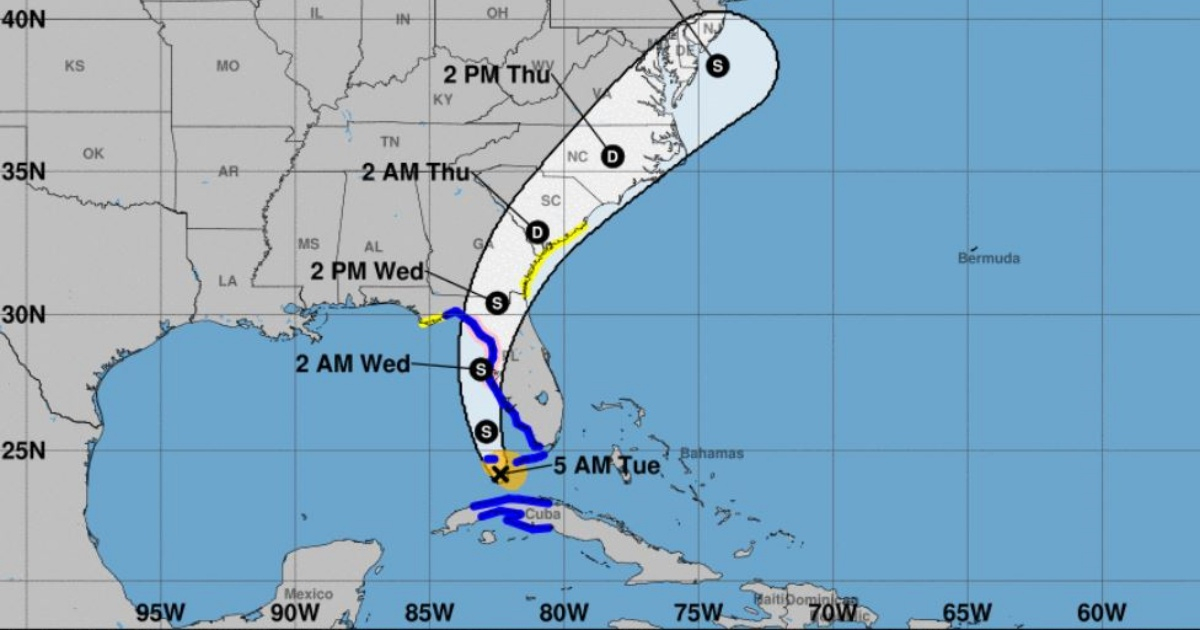
The Tropical Storm Elsa It is approaching the coasts of Florida and the National Hurricane Center (NHC) estimates that the system could strengthen in the coming hours and make landfall with near-hurricane strength.
The NHC, which at 5 a.m. (local time) estimated the center of Elsa to be about 80 km southwest of Key West, predicted that the storm will strengthen over the next night, and warned that “It could be close to hurricane strength before it makes landfall in Florida.”
In forecasting models, Elsa It will pass near the Florida Keys during the morning of this Tuesday and will move over areas of the west coast of Florida during the afternoon of today and Wednesday.
Elsa is moving towards the north-northwest at about 19 km/h and this general movement is expected to continue in the next few hours, followed by a turn further northward on Tuesday night and a movement towards the north-northeast on Wednesday.
The maximum sustained winds remain close to 95 km/h, with larger gusts. Tropical storm-category winds extend within a radius of 110 km from the center.
Once it hits some point on the Florida Peninsula, the phenomenon's tendency would be to weaken as it moves inland.
The governor of Florida, Ron DeSantis, asked Floridians on Sunday to be prepared for the rain, winds and storm surge associated with Elsa and to stay safe.
DeSantis declared an emergency for the counties of Charlotte, Citrus, Collier, DeSoto, Hardee, Hernando, Hillsborough, Lee, Levy, Miami-Dade, Monroe, Pasco, Pinellas and Sarasota, in order to facilitate the disbursement of economic resources in the event of need.
Although Miami-Dade County is outside the trajectory cone, its proximity forced the total demolition of the damaged building in Surfside, north of Miami Beach.
Authorities also reported that the county could be affected by rain, gusts of wind, flooding and tornadoes before the arrival of Elsa.
Charles Crylle, from the Miami-Dade emergency office, recommended “try not to travel tonight or make unnecessary trips because there are winds and rains that make it very dangerous.” They also asked residents to monitor all warnings as Elsa approaches South Florida.
Elsa's passage through Cuba
Elsa touched Cuban soil around two in the afternoon on Monday (local time) by the Ciénaga de Zapata, in the province of Matanzas.
The meteorological phenomenon crossed Cuba from south to north, leaving a trail of significant rains in some regions of the island and partial damage although not of the magnitude of previous tropical storms.
Tropical Storm Elsa went out to sea around 10:00 pm (local time) at a point between Rincón de Guanaco and Jaruco, in the province of Mayabeque.
During the afternoon and night the storm moved through the east of the province of Mayabeque, with a course between the northwest and the north-northwest, registering maximum sustained winds of up to 85 kilometers per hour.
According to the Institute of Meteorology, cloudy weather and rain will continue to affect the provinces from Pinar del Río to Cienfuegos and Villa Clara, which will continue to be strong and intense in some locations.
UPDATE ON STORM ELSA:
What do you think?
COMMENTFiled in: